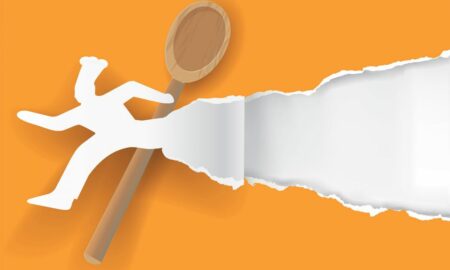

Today we’d like to introduce you to Peter Curka.
Thanks for sharing your story with us Dr. Curka. So, let’s start at the beginning and we can move on from there.
Graduated from University of New England College of Osteopathic Medicine in 1983 and after a tour as a military physician in Germany I completed a residency in emergency medicine at Brooke Army Medical Center in San Antonio. After leaving the Army in 1990 I came to Houston working initially with the Houston Fire Department as Associate EMS Medical Director and then later as an emergency physician in a variety of hospitals in and around Houston.
Osteopathic Medicine is a somewhat different school of practice that dates back to the late 19th and early 20th century and although today DO’s (doctor of osteopathy) practice in much the same way as MD’s (and are fully licensed physicians) the roots of Osteopathic Medicine are actually fairly radical rejecting most of the drugs of the era and emphasizing the ability of the human body to heal itself. Part of this approach is the use of manual techniques to adjust and normalize the structure of the body to enhance this self healing capacity.
Prior to medical school I had been very interested in nutrition, exercise and natural approaches to health and illness so this aspect of osteopathic medicine was appealing to me even though I eventually specialized in emergency medicine.
Practicing emergency medicine was very satisfying but after about 10 years I noticed that many people weren’t being very well served by mainstream medicine. Patients were on more and more medications and not feeling particularly well, especially when it came to problems with muscles,bones and joints and of course everyone (myself included) was getting fatter!
I had always enjoyed classes and labs in osteopathic manipulative medicine and was fairly good at it but it was not something that was easy to do during a busy ER shift. I began to think about getting back to that as an additional practice and spent some time with an older doctor who practiced mostly manipulation.
There had always been people that had more or less specialized in manipulation even though it was something that all DO’s were supposed to do and integrate into their practice. Around 1995 the American Osteopathic Association recognized this fact and created a specialty board and began to develop Osteopathic Manipulative Medicine as a distinct specialty. So between 1998 and 2005 I took about 250 hours of continuing education course and qualified to take the board exam and became board certified. I practiced and taught manipulation in the Family Practice department at UTMB in Galveston for a few years and then after a few more detours I opened my private practice in 2013.
My current osteopathic practice is what you would call a “micro practice”. I don’t have a receptionist, assistant, office manager or billing clerk. I do everything myself and patients are surprised to connect directly to the doctor when they call for information or to make an appointment. I am happy to answer patient’s questions about what I do and how it might help them prior to making an appointment, although sometimes that means they decide not to make an appointment, and I will recommend other treatment if I think that is more appropriate.
My practice is also “third party free” which means I don’t take insurance and patients pay me directly. I believe that insurance (government and private) raises the cost of medical care and interferes with the doctor-patient relationship and is the cause of most of our current problems in health care. I prefer to work directly for my patients. I can provide a coded statement for people who want to file a claim with their insurance company but I don’t file the claim.
The goal of osteopathic manipulative treatment is to normalize (as much as possible) the alignment of the body and the connective tissues. When the body is out of alignment we use more energy and our muscles tire more easily and this is a stress on the body even if there isn’t much pain. In addition to pain this stress can affect the immune system and increase inflammation throughout the body. When the joint and soft tissues are tight or not moving freely there is obstruction to the free flow of blood, nerve impulses and lymph fluid which over time can produce changes in organs and disease.
Has it been a smooth road?
Emergency physicians usually work for a group. These can be small single hospital groups or large multi state “mega groups ” and so there are other people to deal with the business issues like billing and collections etc. Also for the most part there is never a shortage of patients for the emergency department and marketing is usually not a major issue. So figuring those things out has been a challenge.
Many people also want to use their insurance (understandable) and so when they learn that I only take payment directly from them they will often decide not to make an appointment. As a result my practice is not as busy as I would like but I feel strongly about being “third party free”. On the positive side this gives me plenty of time to spend with the patients I do have
Many people find doctors through their insurance company panels and my practice isn’t listed there so marketing and getting the word out is a challenge.
Most people have an idea what a chiropractor is and what they do, not so much with osteopaths (even though we’ve been around a little longer!) There is a difference and of course I think we’re better!
So, as you know, we’re impressed with Peter A Curka DO – tell our readers more, for example what you’re most proud of as a company and what sets you apart from others.
Osteopathic Physicians, unlike chiropractors (physical therapists, massage therapists, rolfers etc..) are fully trained and licensed physicians and practice in all specialties so they have experience with all of medicine and this obviously adds a great dimension to their knowledge and treatment.
Let’s touch on your thoughts about our city – what do you like the most and least?
First came to Houston in 1986 and was impressed with the dynamism. It seems like everyone is starting a business (or a second or third business). Great restaurant town. Once you learn your way around there’s good night life and lots of other things to do but very relaxed.
Traffic is bad, much worse over the past 10 years and by the middle of July the heat can start to wear you down.
Pricing:
- Initial consultation is $225.00. Includes detailed structural examination and initial treatment.
- Established/follow up patient fee is $125.00.
- Transparent, up front pricing.
- Most patients average 2-3 visits for a given problem.
Contact Info:
- Address: 7505 Fannin
Suite 208
Houston TX, 77054 - Website: osteopathhouston.com
- Phone: 832-667-8086
- Email: info@osteopathhouston.com
- Facebook: @osteopathhouston






Getting in touch: VoyageHouston is built on recommendations from the community; it’s how we uncover hidden gems, so if you know someone who deserves recognition please let us know here.


















nutecsciences.com
April 10, 2019 at 9:48 am
Dr. Curka will be happy to answer any questions you might have about osteopathic treatment. Simply complete this form to get started.